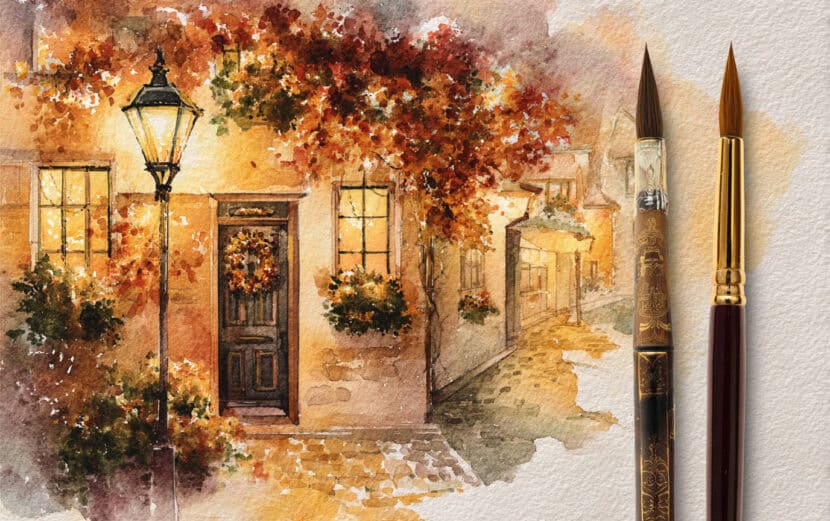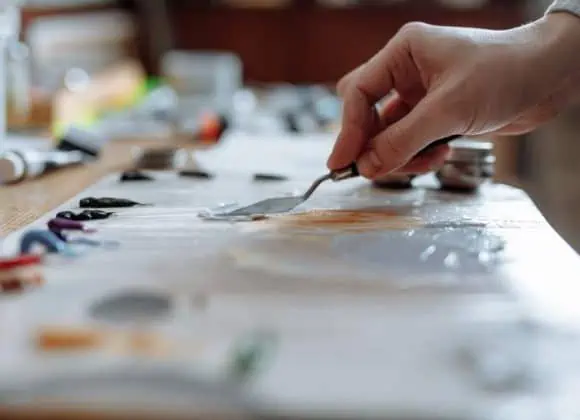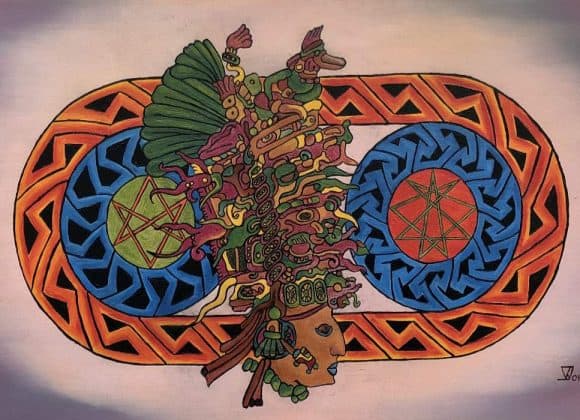I’ll be honest – autumn village watercolors kicked my butt when I first tried them. I thought, “How hard could it be? Just paint some houses with trees around them.” Boy, was I wrong. That first attempt looked like a kindergartner’s drawing of home, complete with windows that defied all laws of perspective and a chimney that seemed to be floating in mid-air.
But something about that disaster made me want to try again. Maybe it was the way my neighbor peeked over my shoulder and said, “Oh, is that supposed to be the village from Beauty and the Beast?” (It wasn’t, but I took it as a compliment.) There’s something deeply satisfying about trying to capture those moments when you’re walking through a small town and everything just feels… right. The way afternoon light makes even the most ordinary cottage look like it belongs in a storybook.
Here’s what nobody tells you about village watercolors – they’re sneaky. You start thinking you’re just painting buildings, but before you know it, you’re making decisions about whether Mrs. Henderson (yes, I name the imaginary residents) would have lace curtains or simple blinds. You’re wondering if that cottage on the hill belongs to someone who bakes bread every morning or someone who stays up late reading mystery novels by lamplight.
The technical stuff matters, sure. You need to understand how perspective works or your cottages will look like they’re sliding downhill. Color mixing is crucial unless you want your autumn villages to look like they’re having a perpetual sunset (been there, done that, looked ridiculous). But the real magic happens in the storytelling moments – when you decide to add a cat sleeping on a windowsill, or when you make that one cottage window glow just a little brighter than the others.
All artwork provided is original and can be used as a reference for your own paintings.
Table of Contents
Why Your First Village Painting Will Probably Look Weird (And That’s Okay)
Let’s talk about the elephant in the room – or should I say, the wonky cottage in the painting. Village watercolors are deceptively tricky. They look simple enough: some buildings, some trees, maybe a church steeple poking up in the background. What could go wrong?
Everything, as it turns out. Your first attempt might have windows that look like they belong on a funhouse, or a roof that seems to be defying gravity. I once painted a village where every single building appeared to be sliding downhill like they were built on ice. My art teacher took one look and asked if I was depicting an earthquake.
But here’s the thing – those disasters are actually teaching you something important. Each weird-looking window is showing you how perspective works (or doesn’t work, in this case). Every floating chimney is a lesson in how buildings actually connect to each other. And that village that looked like it was having an earthquake? That taught me more about establishing a consistent ground plane than any textbook ever could.
25 Village Watercolor Concepts That Push Creative Boundaries
Rather than organizing these by time of day or weather conditions, I’ve grouped them by the specific artistic challenges and learning opportunities they present:
Mastering Atmospheric Perspective
Golden Hour Cottage Row
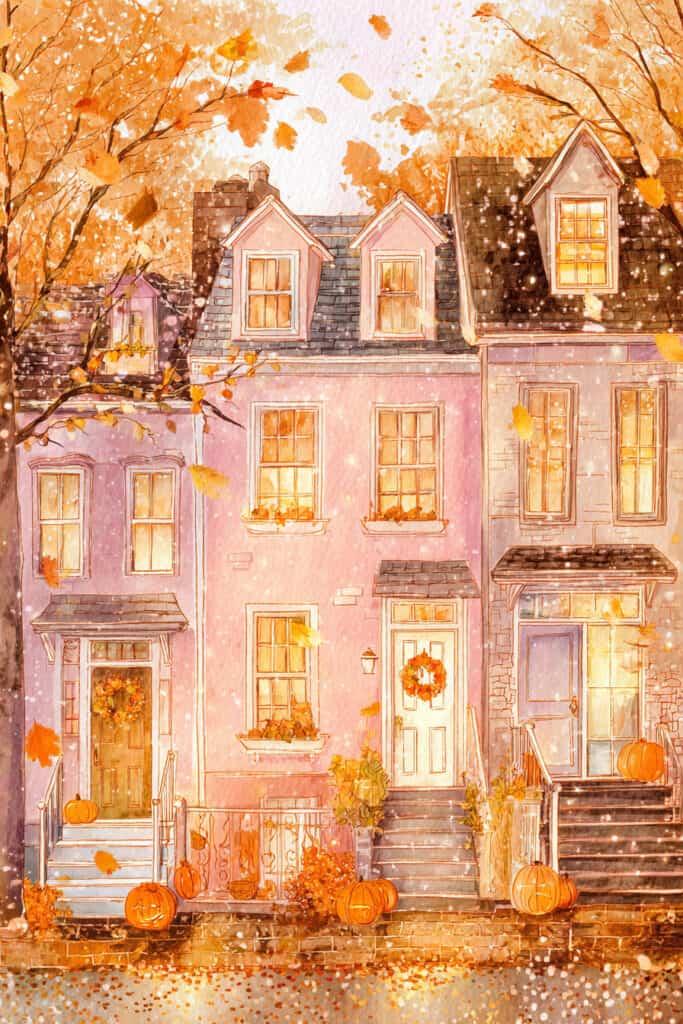
This isn’t just about painting pretty cottages – it’s about understanding how distance affects color temperature and contrast. Each cottage in your row should become progressively cooler and less detailed as it recedes. The challenge lies in maintaining visual interest across the entire row while clearly establishing spatial relationships.
Mountain Village Overlook
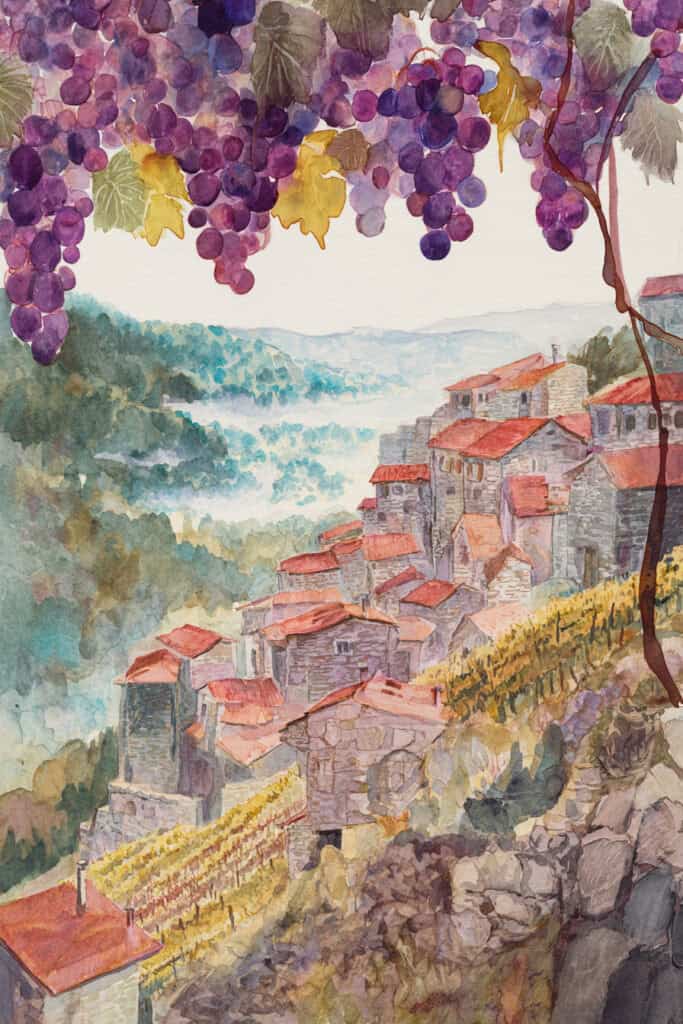
Elevated viewpoints teach you aerial perspective in ways that ground-level scenes can’t. You’ll learn how atmospheric haze affects color saturation at different distances, and how to use color temperature shifts to suggest vast spaces without overwhelming detail.
Misty Morning Mill House
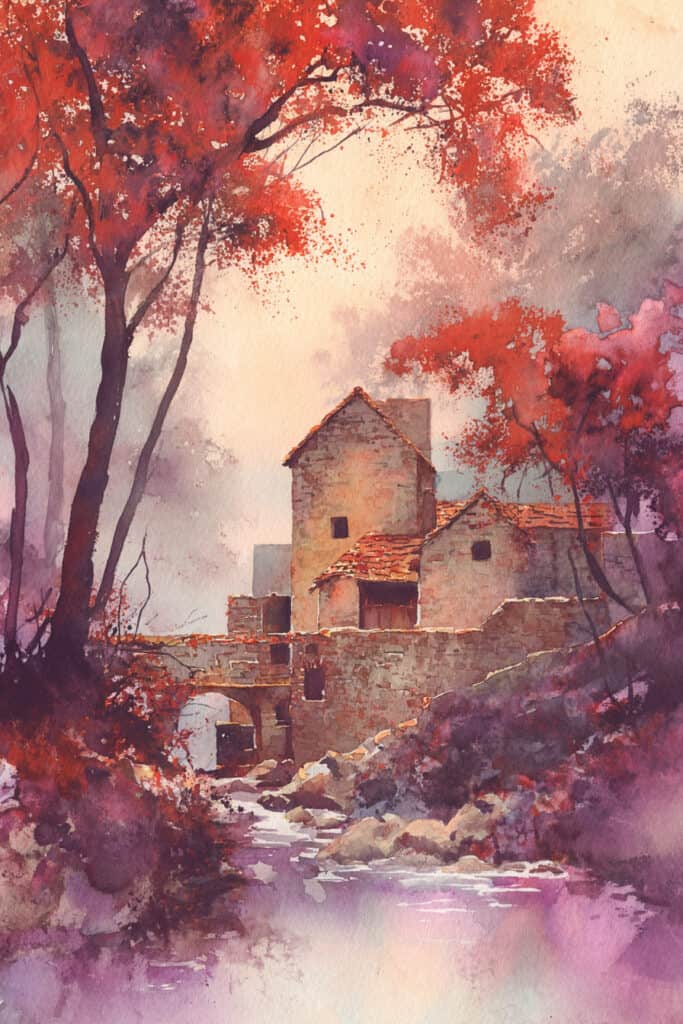
Fog and mist aren’t just pretty effects – they’re masterclasses in selective focus. This scene teaches you when to lose edges, when to maintain them, and how to use value contrast to guide the viewer’s eye through a composition with limited visibility.
Lakeside Village Reflection
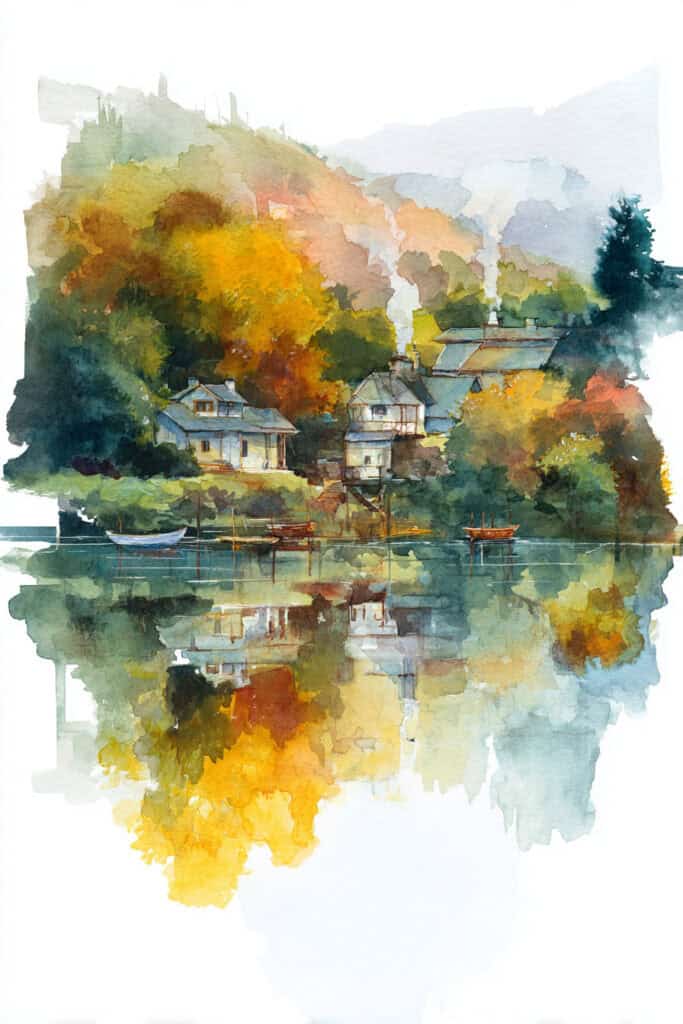
Reflections force you to understand how light, color, and form behave differently on horizontal versus vertical surfaces. The technical challenge of painting convincing water reflections while maintaining the village’s architectural integrity creates a perfect balance of precision and fluidity.
Fairy Light Forest Village
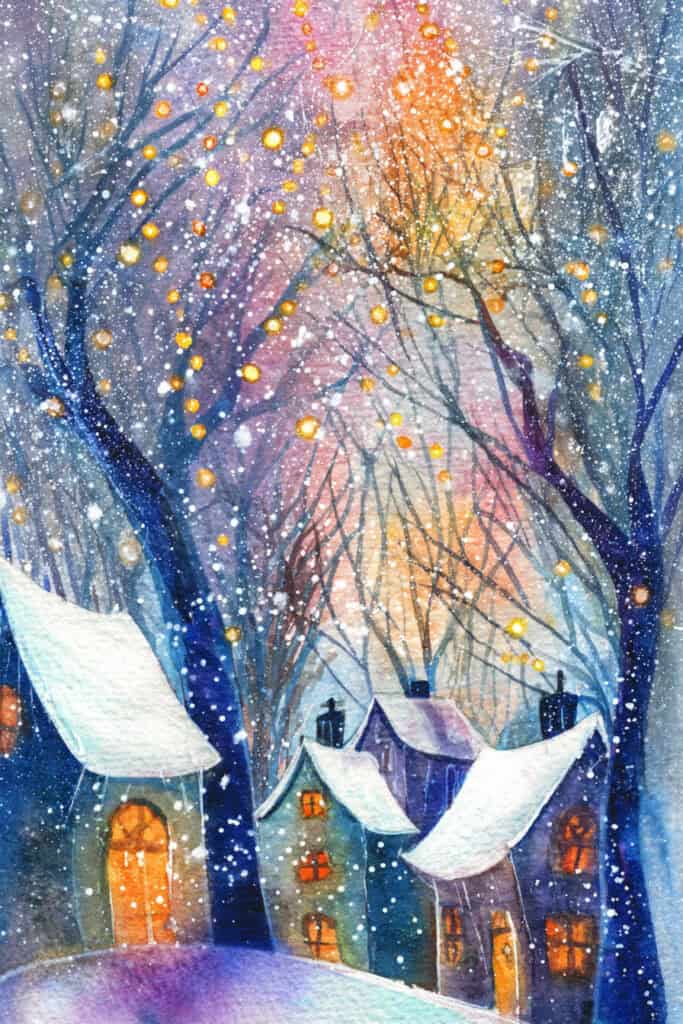
Artificial lighting scattered throughout a natural setting teaches you about multiple light sources and their competing influences. Each light creates its own sphere of influence, and managing these overlapping effects challenges your understanding of both color temperature and value relationships.
Understanding Color Harmony in Complex Scenes
Pumpkin Spice Village Square
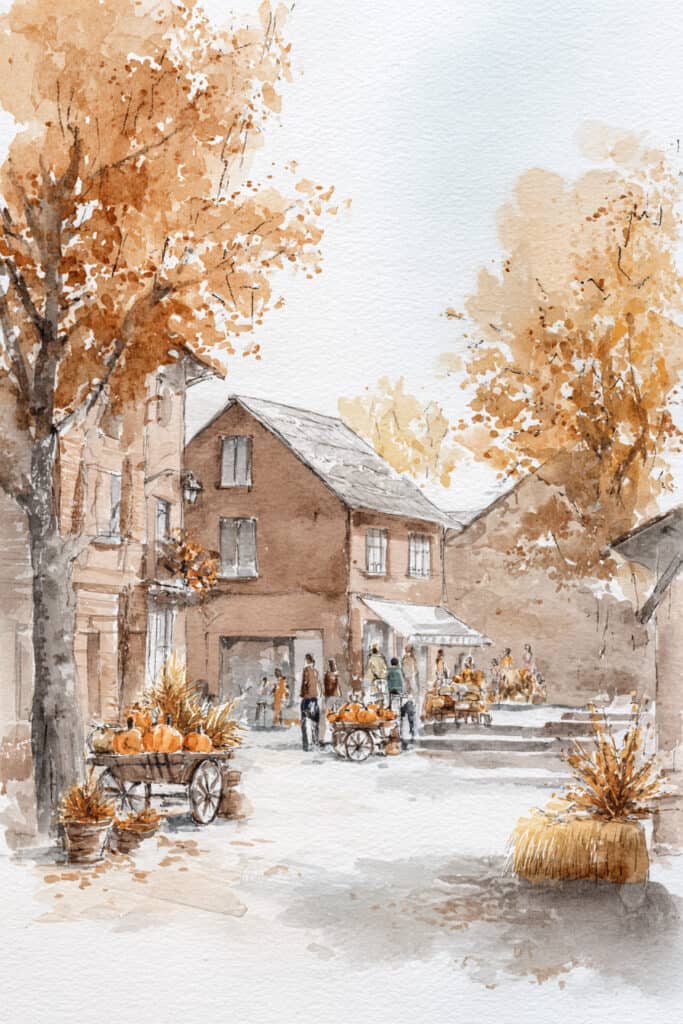
Markets and gathering places offer wonderful opportunities to practice color harmony with multiple focal points. The challenge isn’t just painting individual oranges, reds, and golds beautifully – it’s making them work together as a cohesive whole while maintaining visual hierarchy.
Vineyard Village Estate
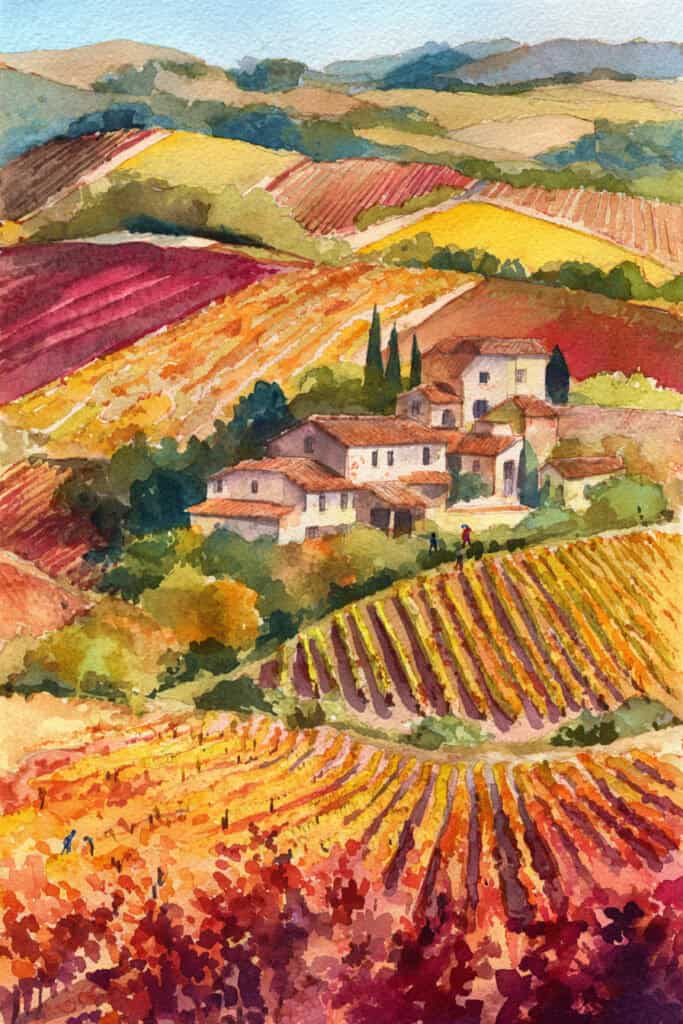
Vineyard settings teach you about analogous color schemes pushed to their limits. Working within the autumn palette of golds, oranges, and reds while still creating depth and interest demands sophisticated understanding of color relationships.
Herb Garden Village Court
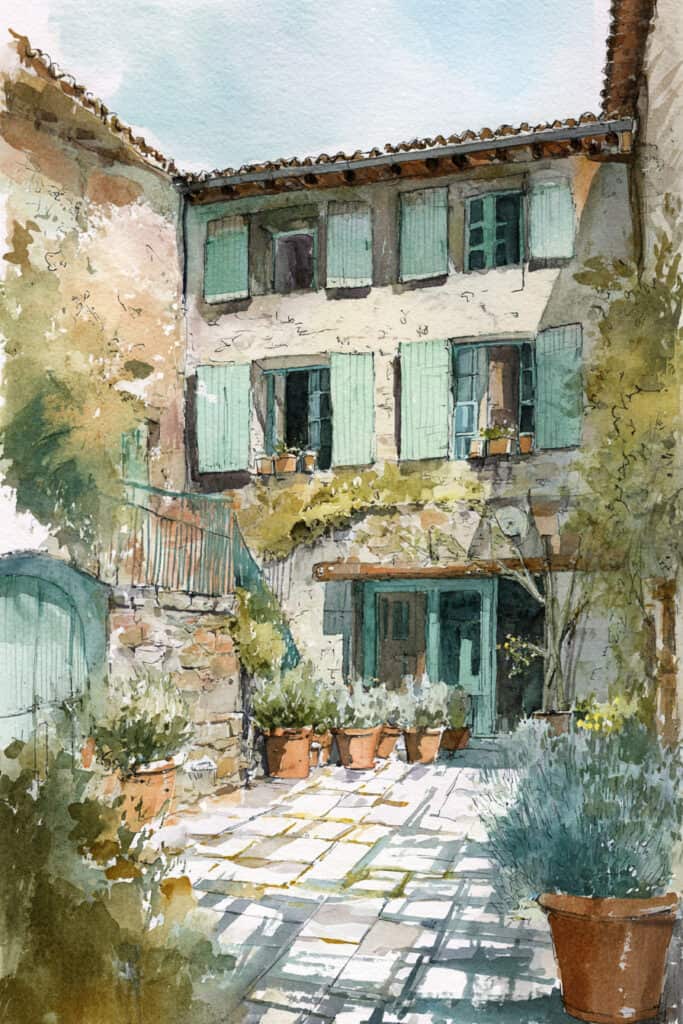
Gardens challenge you to paint dozens of different greens without creating visual chaos. This scene teaches you how to vary temperature, saturation, and value within a limited color range while maintaining overall harmony.
Apple Orchard Homestead
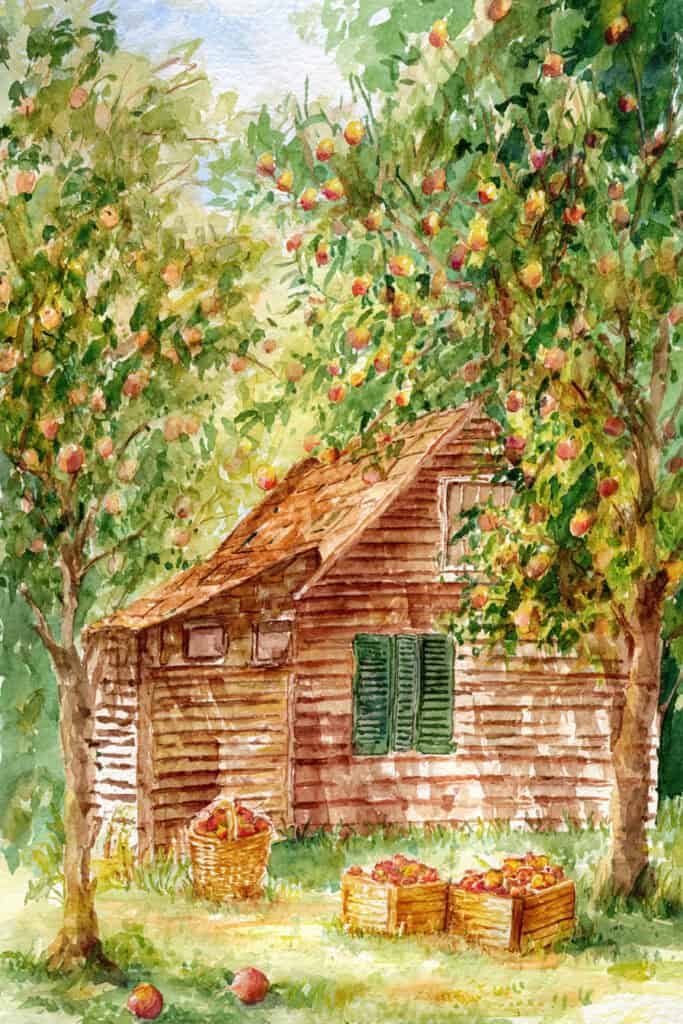
Orchards present the challenge of repetitive elements (all those apples and leaves) that must remain visually interesting. You’ll learn techniques for suggesting abundance without painting every single apple, and how to use selective focus to create hierarchy in busy compositions.
Sunflower Field Village
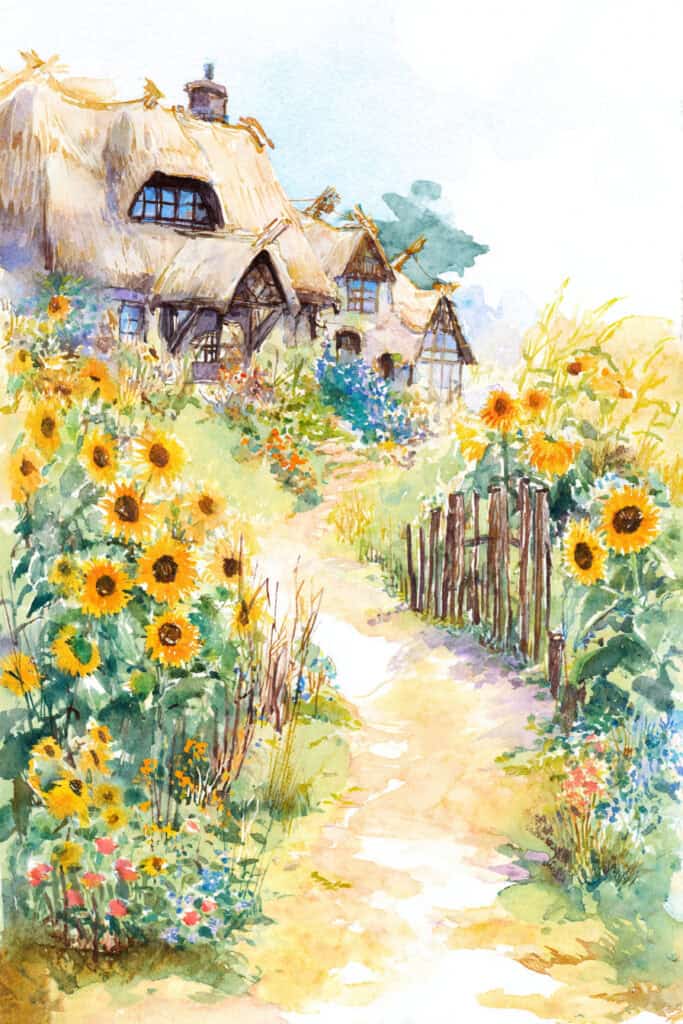
Bold yellows can easily overpower a composition. This scene teaches restraint and balance – how to celebrate the sunflowers’ vibrant color while ensuring they support rather than compete with the village elements.
Architectural Character and Weathering
Covered Bridge Township
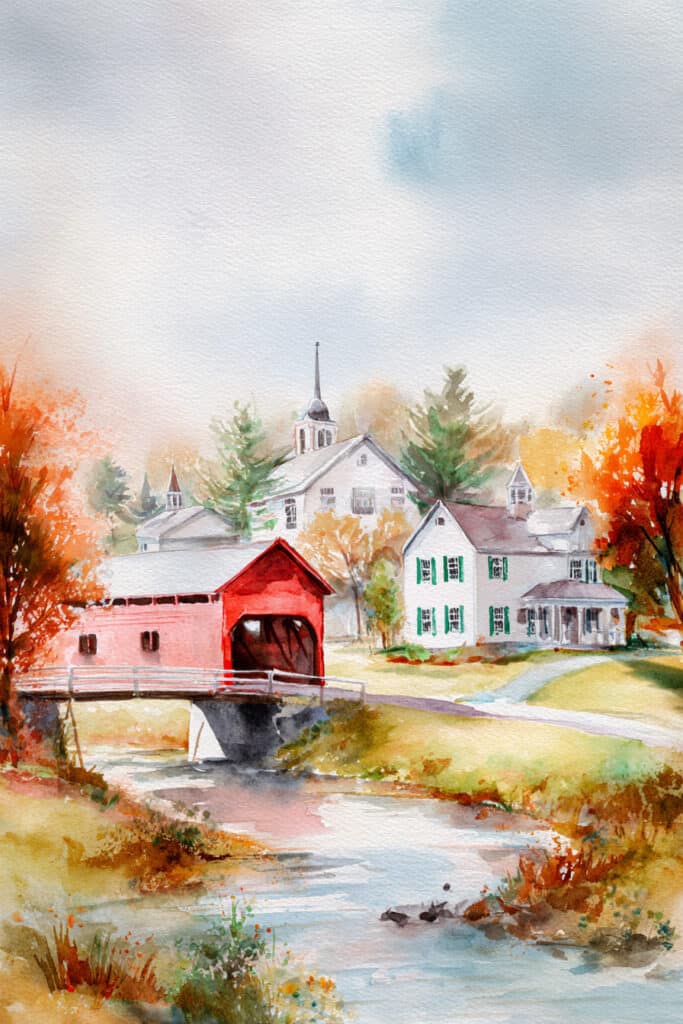
Historic structures tell stories through their weathering patterns, repairs, and modifications over time. This scene teaches you to see and paint the narrative embedded in architectural details – where wood has been replaced, how different materials age, and what these changes tell us about the building’s history.
Antique Shop Village Lane
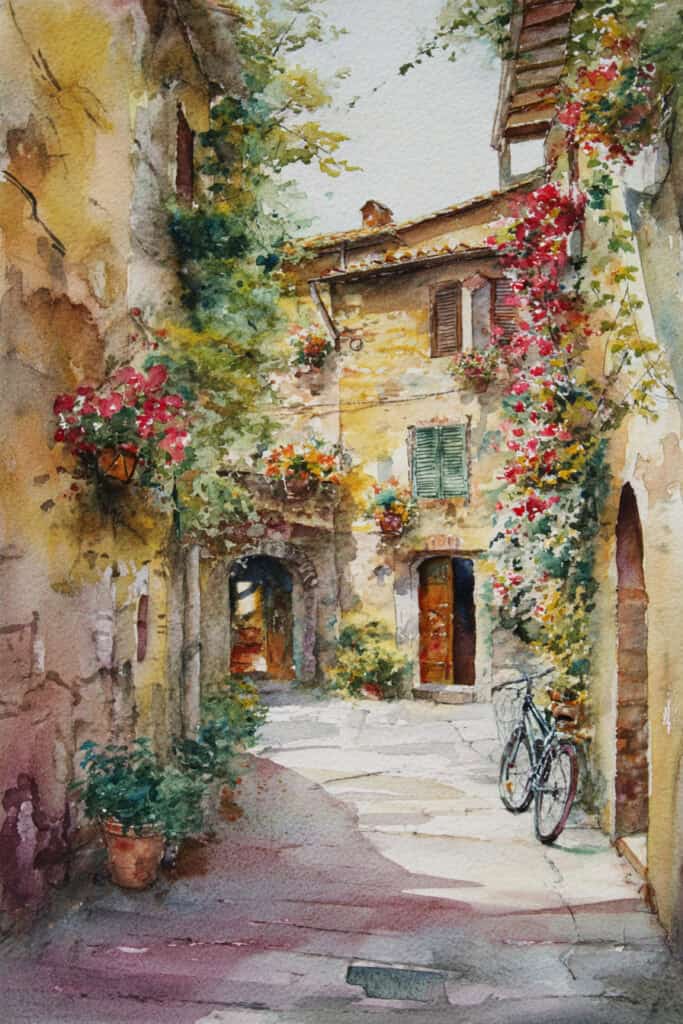
Buildings with different ages, materials, and purposes create fascinating juxtapositions. You’ll learn how to paint various architectural styles within one composition while maintaining visual unity through color and brushwork choices.
Blacksmith Village Square
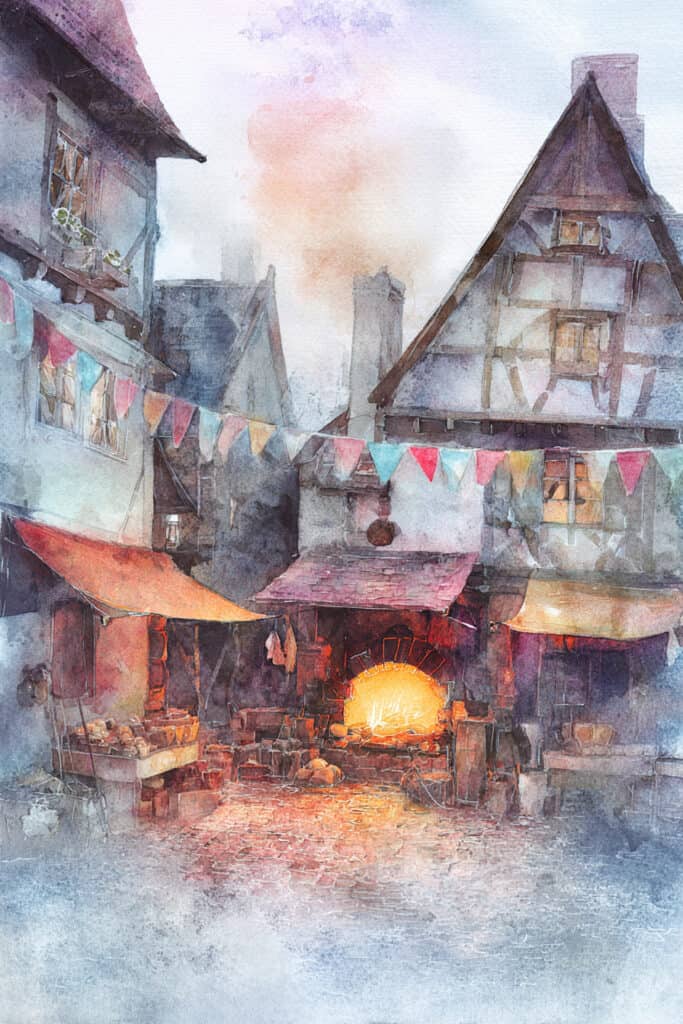
Working buildings have different character than purely residential structures. The open forge doors, the scattered tools, the functional elements all require different painting approaches than decorative cottage details.
Candlemaker’s Village Row
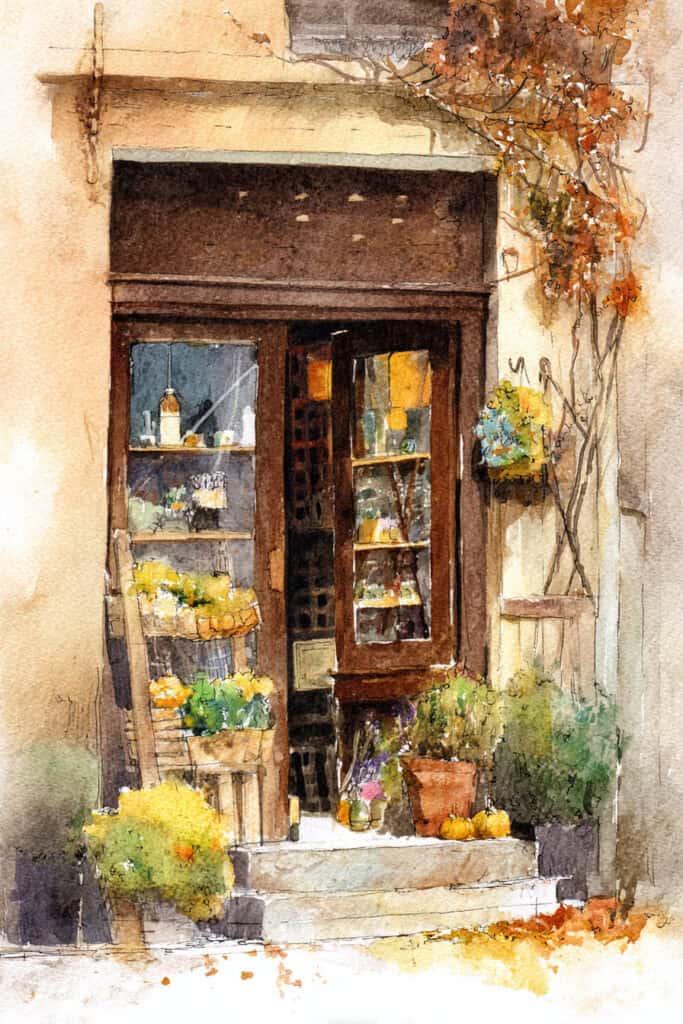
Artisan buildings often show their purpose through architectural details – larger windows for better light, specialized doors for equipment access. These functional elements teach you to think about why buildings look the way they do, which makes your architectural painting more convincing.
Vintage Train Station Village
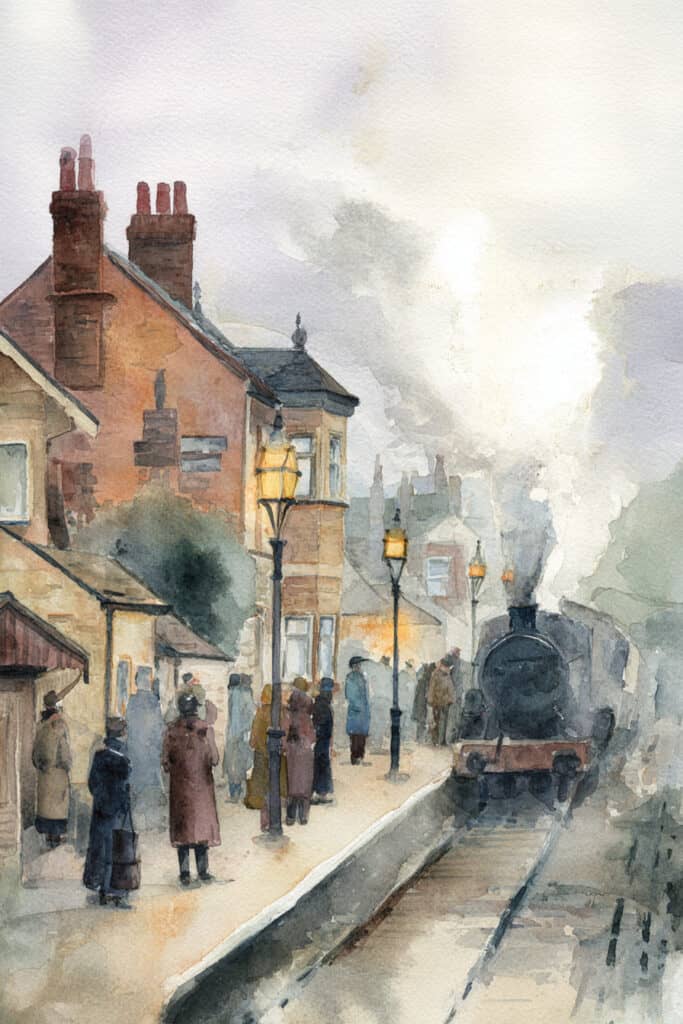
Transportation hubs represent different eras of construction and modification. You’ll practice painting the intersection of industrial and domestic architecture, learning how different building purposes create different visual rhythms and proportions.
Water and Reflection Mastery
Riverside Cottage Colony
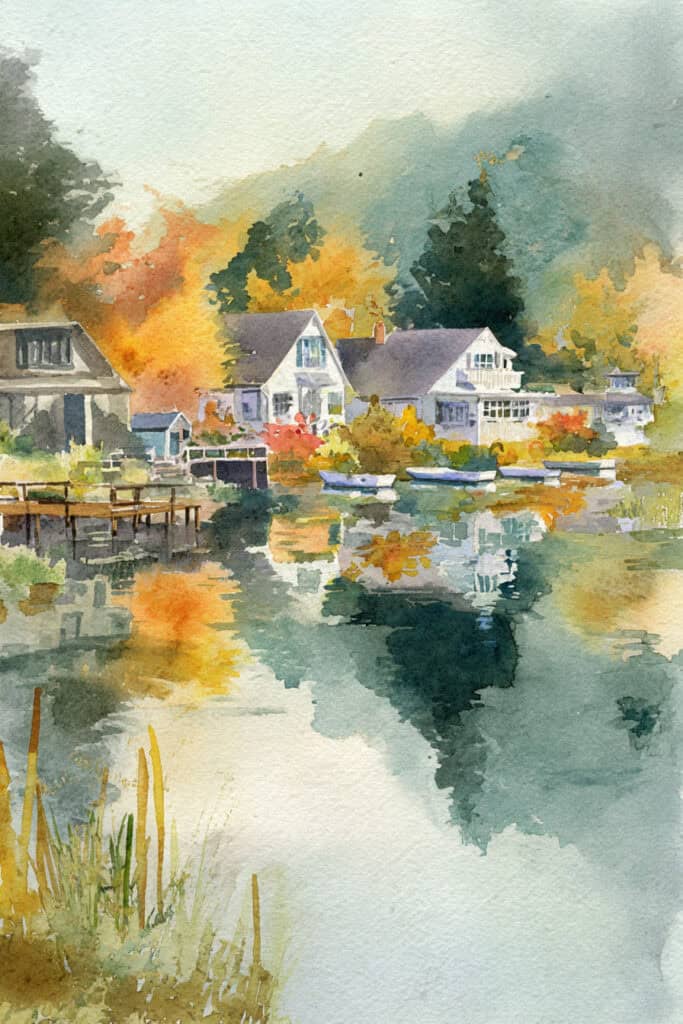
Still water reflections seem straightforward until you try to paint them convincingly. This scene teaches you the subtle differences between perfect mirror reflections and the gentle distortions that make water look wet rather than like polished metal.
Village Bridge Romance
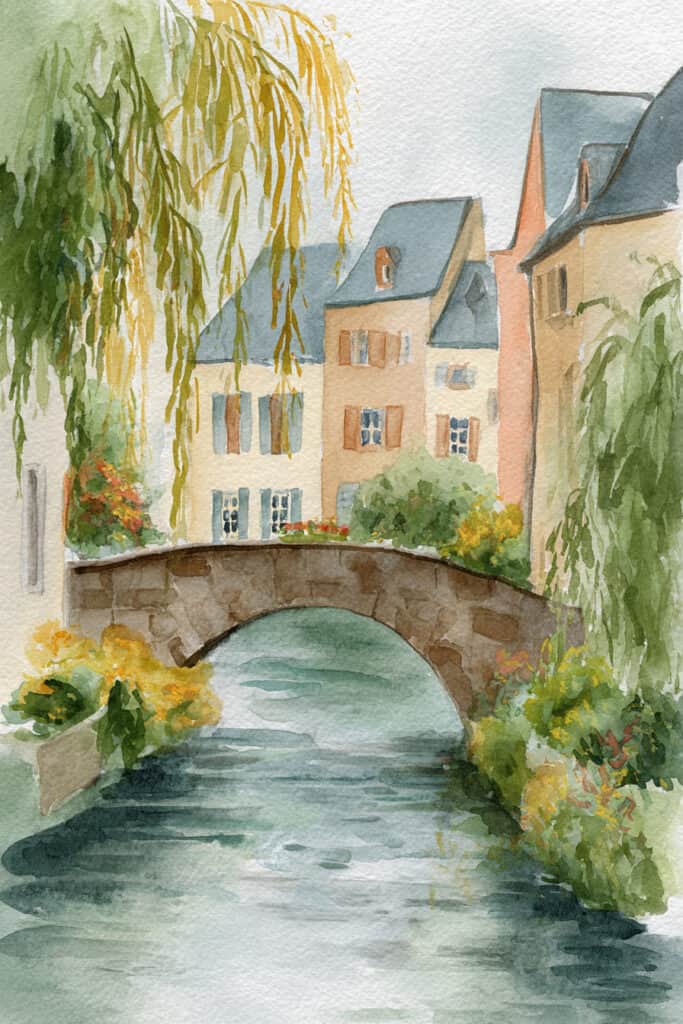
Bridges create fascinating compositional opportunities and technical challenges. The arch structure provides strong geometric elements while the flowing water underneath demands entirely different brushwork techniques.
Lighthouse Village Coast
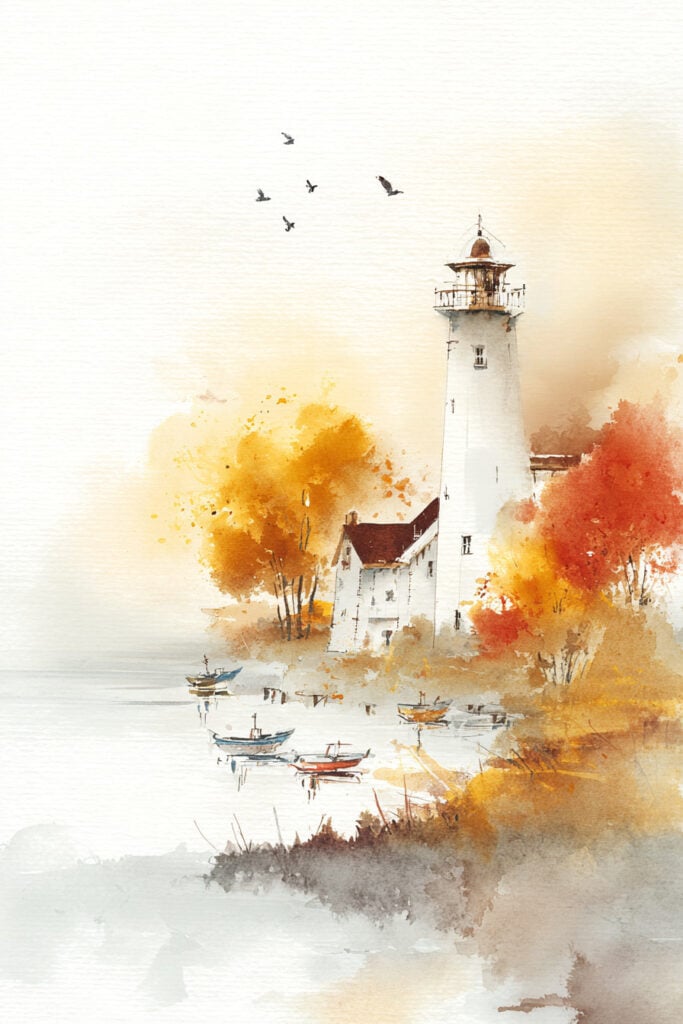
Coastal water behaves differently than inland streams and ponds. You’ll learn to suggest the movement and transparency of salt water while managing the complex relationship between maritime and terrestrial elements.
Cider Mill Countryside
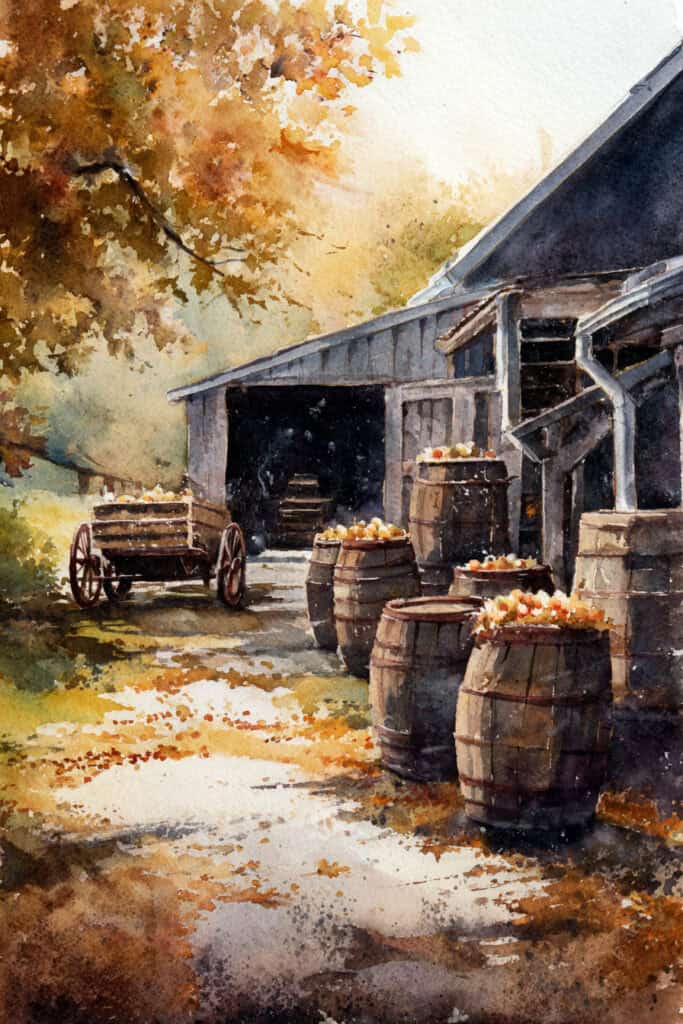
Working water features like mill wheels and streams have their own visual rhythms. The moving water creates different reflection patterns and requires understanding how mechanical elements interact with natural water flow.
Village Tea Garden
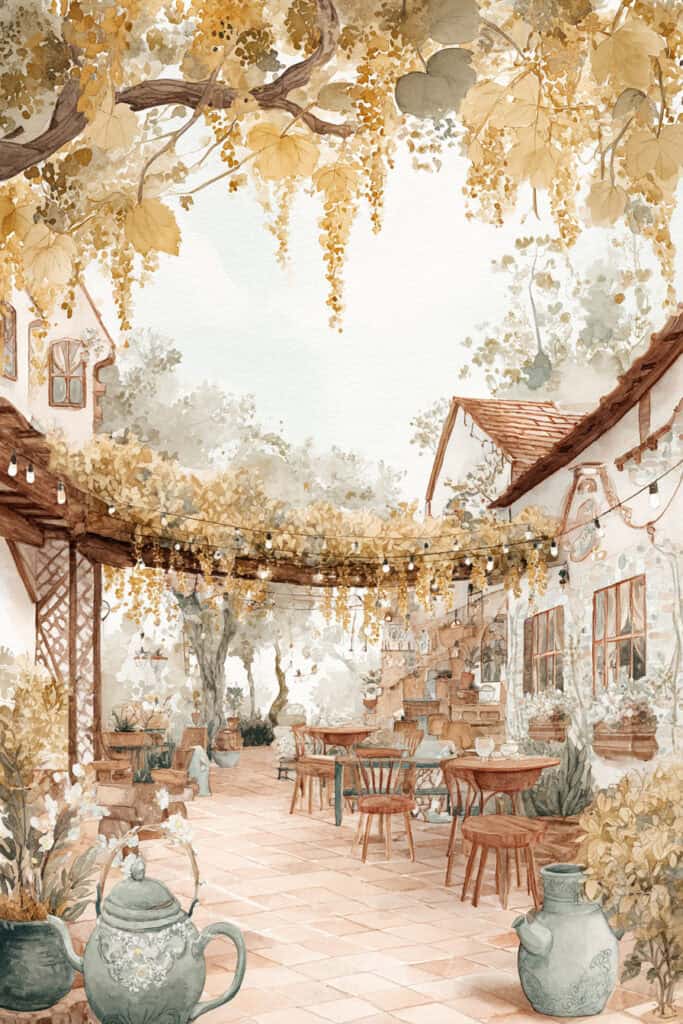
Garden water features – ponds, fountains, small streams – operate on intimate scales that require different techniques than large bodies of water. You’ll practice painting water as a design element rather than a dominant landscape feature.
Lighting Drama and Mood
Candlelit Window Street
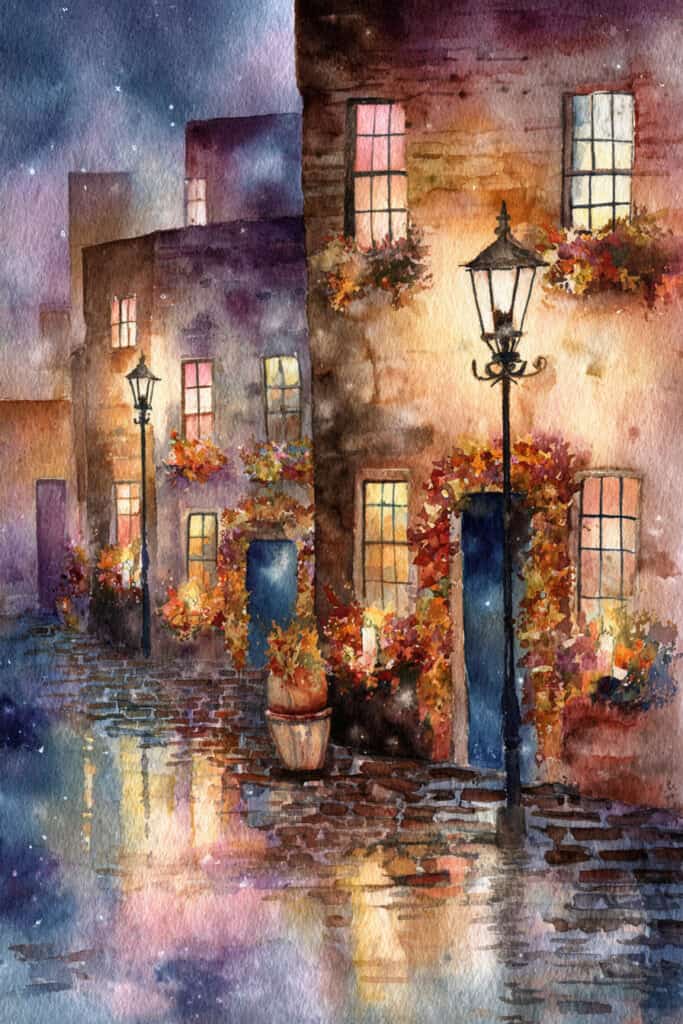
Multiple interior light sources spilling onto exterior surfaces create complex lighting scenarios. Each window casts its own pool of light with specific color temperature and intensity, and managing these overlapping effects teaches advanced color mixing and value control.
Starlight Village Evening
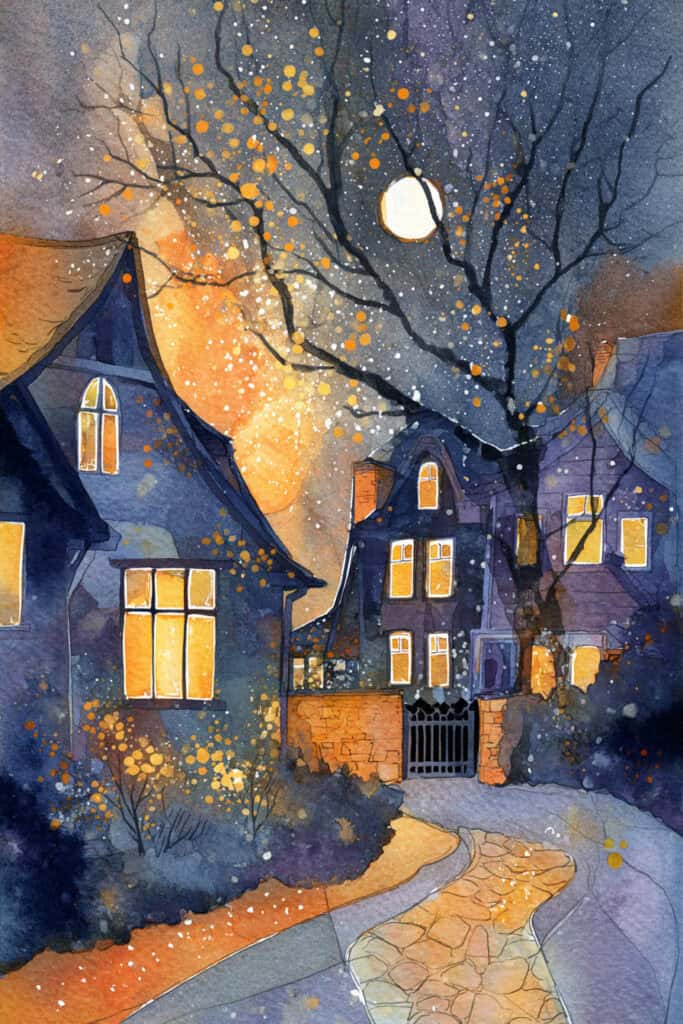
Night scenes reverse typical value relationships – your lightest lights become your focal points while everything else recedes into various levels of darkness. This challenges your understanding of value structure and selective illumination.
Cozy Bookshop Lane
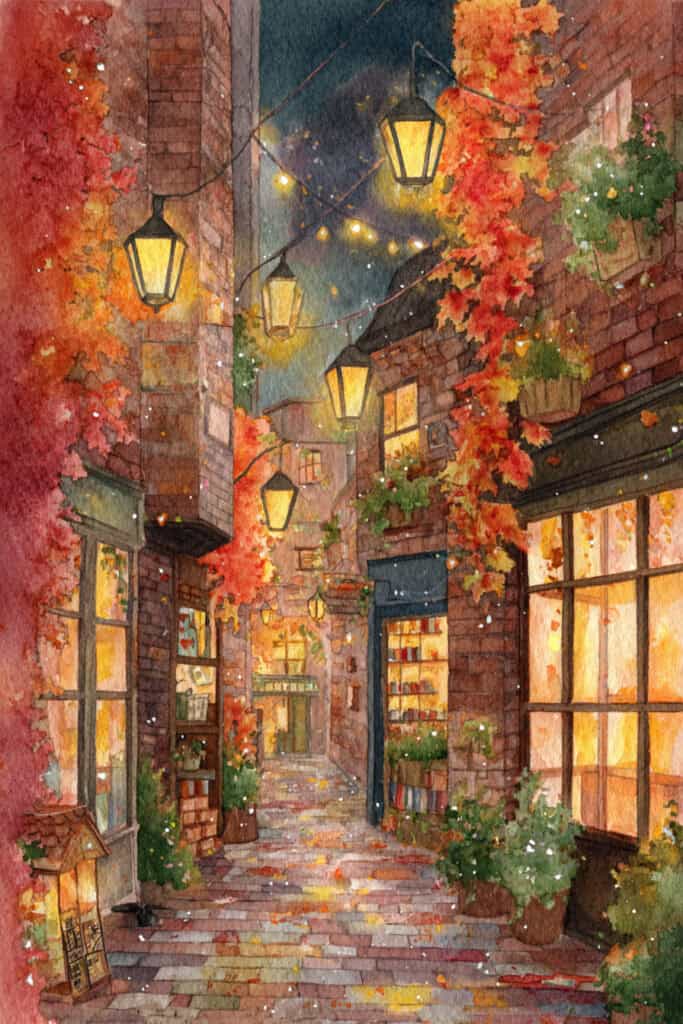
Intimate commercial lighting creates pools of warm color in cool evening environments. The challenge lies in suggesting the inviting interior spaces while maintaining the exterior architectural forms.
Woodland Chapel Clearing
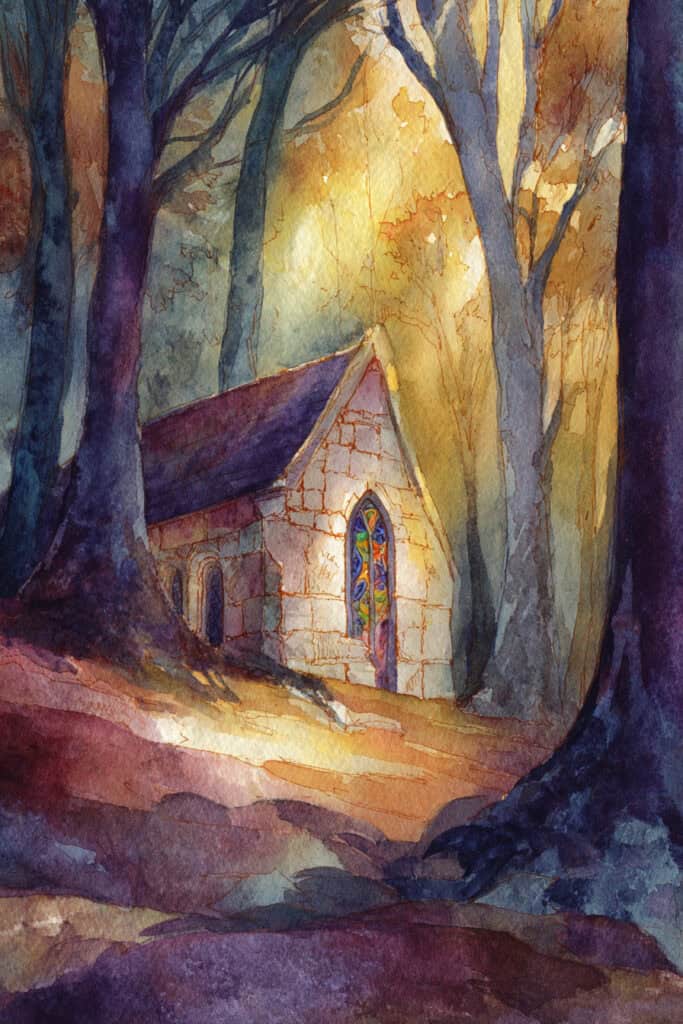
Filtered light through forest canopy creates dappled patterns that change throughout the day. This scene teaches you to paint light as both illumination and pattern, understanding how natural filters affect color temperature and intensity.
Owl Hollow Village
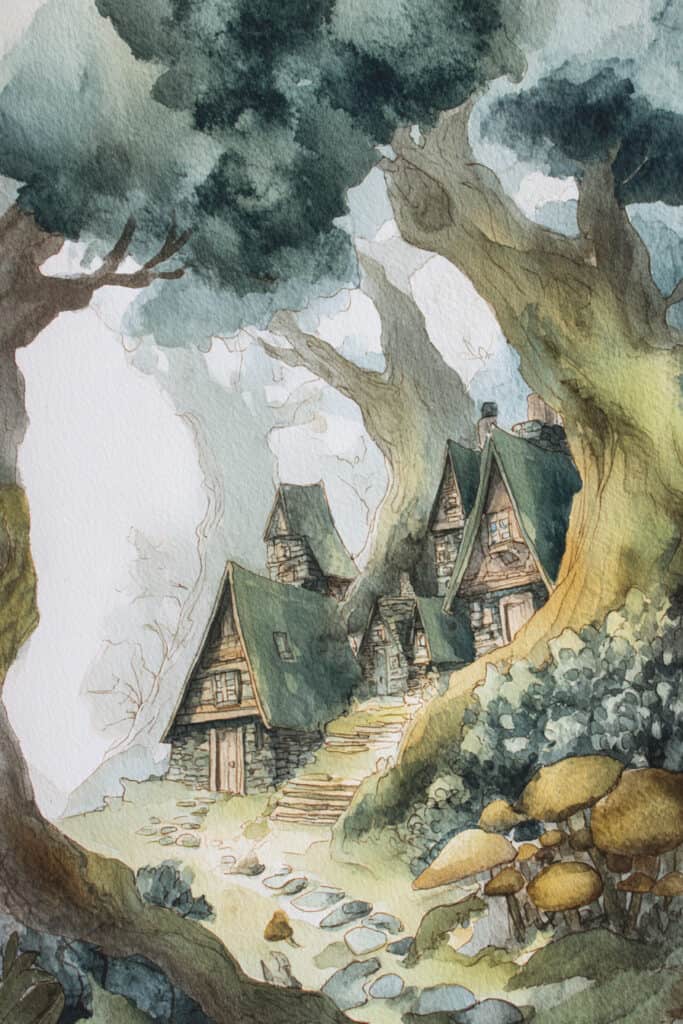
Mystical or fantastical elements push you beyond literal representation while still maintaining believable lighting and atmospheric effects. These scenes challenge you to create mood through painting technique rather than relying solely on subject matter.
The Weird Psychology Behind Why We Love Painting Villages
You know what’s funny? I’ve never lived in a quaint village with cobblestone streets and cottages covered in ivy. Most of us haven’t. I grew up in suburbia where the most charming architectural feature was probably the Starbucks drive-through. Yet something about painting these idyllic village scenes just feels right.
I think it’s because villages represent everything we secretly wish our neighborhoods could be. They’re human-sized – you can walk everywhere, everyone knows each other (at least in our imagination), and nothing ever seems to be in a hurry. When I’m stuck in traffic or dealing with my apartment’s broken air conditioning for the third time this month, the idea of a cottage with a thatched roof and a garden gate sounds pretty appealing.
But here’s the kicker – when we paint these fantasy villages, we get to be the town planner. We decide where the cozy bookshop goes, which cottage gets the climbing roses, and whether the village has a duck pond or a babbling brook. It’s like playing SimCity, but with watercolors and a lot more artistic satisfaction.
Real Talk: What Makes Village Paintings Actually Work
The Light Has to Feel Right I learned this the hard way after painting what I thought was a beautiful village scene, only to have someone point out that the shadows were going in three different directions. Apparently, villages can’t have multiple suns (who knew?).
The thing about light in village paintings is that it’s not just about making things look three-dimensional – though that’s important too. Light creates mood. Golden hour light makes everything look warm and inviting, like someone’s about to call everyone in for dinner. Overcast light can make the same village feel quiet and contemplative, perfect for a story about someone taking a solitary walk.
I’ve noticed that the paintings I’m most proud of are the ones where I spent as much time thinking about the light as I did about the buildings. Sometimes I’ll do a little thumbnail sketch with nothing but light and shadow shapes before I even start worrying about where the windows go.
Buildings Need to Look Like Someone Actually Lives There This sounds obvious, but you’d be surprised how many village paintings look like movie sets – pretty from a distance, but clearly fake up close. Real buildings show their age and use. Window frames get weathered, roof tiles get replaced (and don’t always match perfectly), and doorsteps wear down from years of foot traffic.
I started paying attention to these details after walking through a real historic village and noticing how nothing was quite perfect. The cobblestones were uneven, the cottage walls weren’t perfectly vertical, and every garden gate hung slightly differently. When I started incorporating these imperfections into my paintings, suddenly they felt like places where actual people lived, not just tourist attractions.
Technical Insights That Transform Village Paintings
Shadow Shapes Tell Stories The shadows cast by buildings, trees, and other village elements create secondary compositions within your painting. Learning to design these shadow patterns consciously rather than just copying what you see elevates your work from documentation to interpretation.
Edge Quality Controls Attention Villages offer perfect opportunities to practice selective focus through edge control. Sharp edges draw attention and suggest proximity or importance, while soft edges recede and provide visual rest. Managing these relationships across a complex village composition requires constant decision-making about what deserves emphasis.
Color Temperature Creates Spatial Depth Beyond the basic warm-advances, cool-recedes principle, village scenes teach you subtle temperature shifts that suggest different materials, lighting conditions, and atmospheric effects. Stone walls might be cooler than wooden shutters even in the same light, and these small temperature differences accumulate into convincing spatial relationships.
Moving Beyond Formula Into Personal Expression
The real growth in village watercolor painting comes when you stop following recipes and start making intentional choices about what story you want to tell. Maybe your villages are always slightly mysterious, with deep shadows and minimal detail that suggests rather than describes. Perhaps you’re drawn to the golden hour optimism of warm light and glowing windows, or the melancholy beauty of rainy day scenes with muted colors and reflective surfaces.
Your technical development should serve your artistic vision, not the other way around. Master the fundamentals of perspective, color mixing, and atmospheric effects so thoroughly that they become unconscious, freeing your conscious mind to focus on the emotional and narrative aspects of your village scenes.
The villages you create will inevitably reflect your own relationship with place, community, and home. Let them. The most compelling village watercolors aren’t just skillful representations of architectural subjects – they’re visual expressions of what home and belonging mean to their creators.

